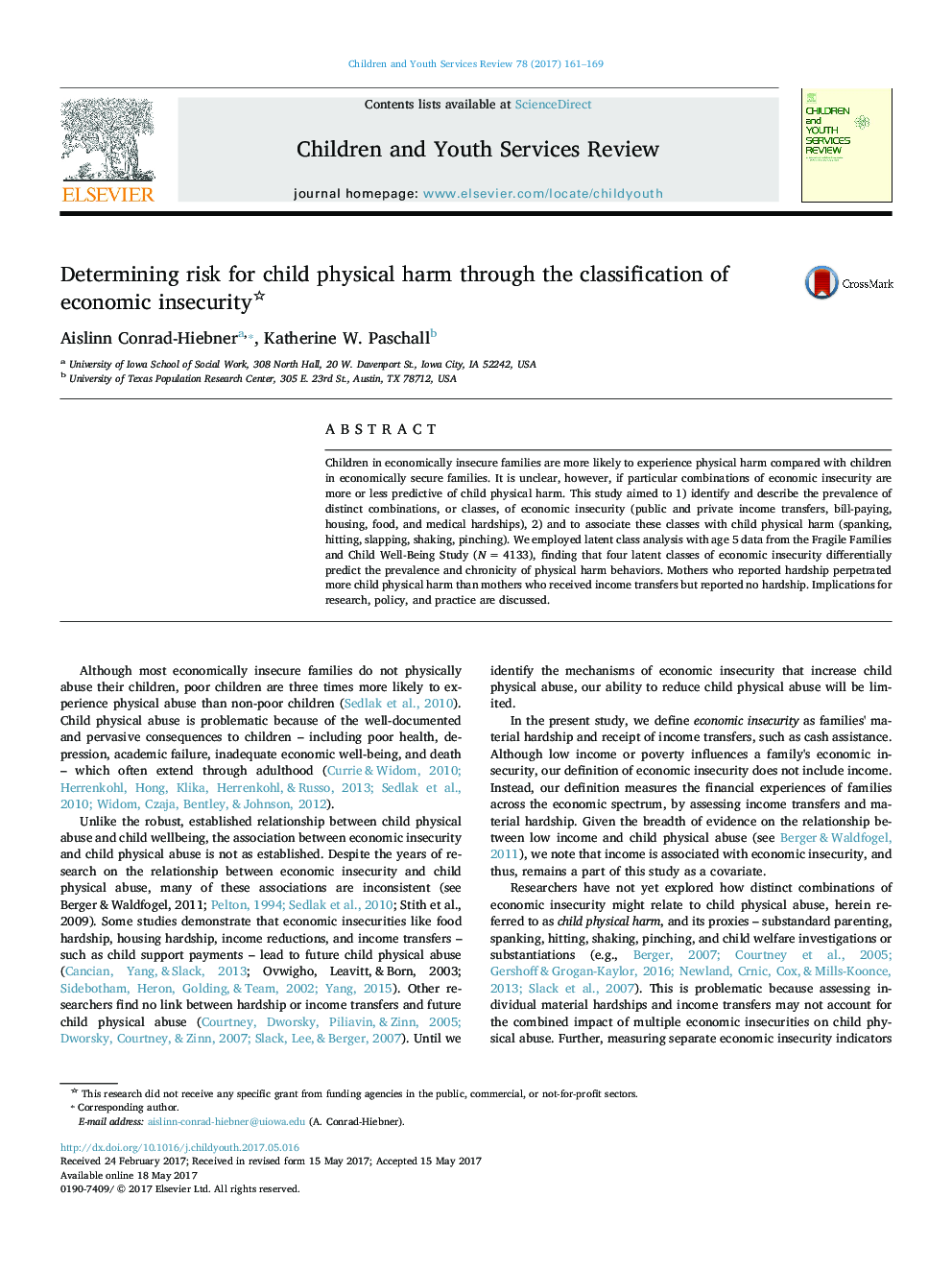| Article ID | Journal | Published Year | Pages | File Type |
|---|---|---|---|---|
| 4936309 | Children and Youth Services Review | 2017 | 9 Pages |
Abstract
Children in economically insecure families are more likely to experience physical harm compared with children in economically secure families. It is unclear, however, if particular combinations of economic insecurity are more or less predictive of child physical harm. This study aimed to 1) identify and describe the prevalence of distinct combinations, or classes, of economic insecurity (public and private income transfers, bill-paying, housing, food, and medical hardships), 2) and to associate these classes with child physical harm (spanking, hitting, slapping, shaking, pinching). We employed latent class analysis with age 5 data from the Fragile Families and Child Well-Being Study (NÂ =Â 4133), finding that four latent classes of economic insecurity differentially predict the prevalence and chronicity of physical harm behaviors. Mothers who reported hardship perpetrated more child physical harm than mothers who received income transfers but reported no hardship. Implications for research, policy, and practice are discussed.
Related Topics
Health Sciences
Medicine and Dentistry
Perinatology, Pediatrics and Child Health
Authors
Aislinn Conrad-Hiebner, Katherine W. Paschall,
